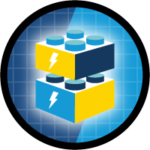
When To Use a LWR Community
When to Use or Upgrade to a Lightning Web Runtime (LWR) Site
You have probably heard about Lightning Web Runtime (LWR) sites by now, especially if you have been keeping up with the latest Experience Cloud release notes. Yes, they are the newest, sleekest framework for Experience Cloud, but does that mean everyone should plan on using or upgrading to a LWR site in the near future? Read on to find out if a LWR site is something your company should consider, or if an Aura-based template is still the best option for your community.
What is the difference between an Aura template and an LWR template?
In short, an Aura site is Salesforce’s legacy, customizable community template. Prior to 2014, Tabs + Visualforce Sites were the best option for a build-your-own site template experience. The 2015 Lightning Community launch gave us Aura-based communities: build-your-own site templates that provide the basic pages that every Experience Cloud site requires. These elements are all a part of the Lightning Framework. With drag-and-drop functionality, more pages and components can easily be added to aid site customization.
LWR sites are the new and improved version of Aura sites and were created to keep up with technological innovation across the industry such as the development of Web Components by Google. Lightning Web Runtime sites differ most notably in their composition – rather than being composed of Aura Components, they are based exclusively on the Lightning Web Components (LWC) programming model.
Like Aura sites, LWR sites include drag-and-drop functionality. Unlike Aura sites, LWR sites are almost entirely created via custom development and composed of Lightning Web Components (LWC). Therefore, a developer familiar with LWCs is essential.
Overall, LWCs extend much of the same functionality that Aura Components have while also being extremely customizable for the end user experience.

Aura Sites
Benefits of an Aura site
Components are simple to use, reusable, and customizable to a point – without any programmatic knowledge needed.
Compared to legacy Visualforce pages, Aura Components are inherently more secure, with better performance.
Site templates support many pre-configured, drag and drop Aura Components such as Featured Topics, Topic Catalogs, Case Deflection, and Chatter Publisher.
Shortcomings of an Aura site
Standard elements (out-of-the-box pages and components provided as Aura Components) cannot be altered, or the customizations available are extremely limited.
No longer the most secure, browser compatible option on the market.
LWR Sites
Benefits of an LWR site
Increased speed, scalability, security, and design flexibility as compared to Aura sites
Maximum customization for the user experience
Components are portable: because an LWR site is Web Component based and aligns with web standards, LWCs can be re-used elsewhere in non-Salesforce contexts, if desired.
Shortcomings of an LWC site
Programmatic expertise/developer time is required for build and maintenance.
The Build Your Own LWR site template is still very new, and core features are still being developed with each Salesforce release.
The number of standard components supported by LWR are limited compared to Aura sites, with many beloved components such as Case Deflection unavailable. You can keep up with the running list of features available for LWR sites here.
Use Case Comparison
Use Cases for an Aura Site
- You are not a developer, and you need to create a community through point-and-click components.
- Your client does not have a developer to maintain a custom LWR site.
- Budget and/or time constraints for your community implementation.
- Simple use cases (with little to no need for customization) that can be satisfied with pre-built templates

Use Cases for an LWR Site
- You need maximum control over the look and feel of your community. This can apply specifically to the branding of your Knowledge articles, which are now supported by LWR sites. To apply formatting to your Knowledge articles that goes beyond the scope of the native HTML editor for Knowledge, such as foldable accordion sections, consider using or upgrading to an LWR site.
- Brand/marketing continuity is a top priority.
- A need to follow a publish-subscribe messaging model in your site’s codebase, rather than an application-event based model.
- You need to guarantee maximum browser compatibility and performance.
- You have a simple, targeted topic that can be captured fully with a Microsite such as a product showcasing page or event-specific information
In short, Aura template sites still represent the best option for those looking for a lightly customized, heavily pre-packaged community on the Salesforce platform. However, LWR sites offer an enhanced level of customization and security for Experience Cloud, so if those features are the priorities for your site, an upgrade or a new LWR site is worth consideration. For expert solutions and support, reach out to Rosetree Solutions, your trusted 5-star AppExchange partner.

Ellary Kramka, Senior Consultant
